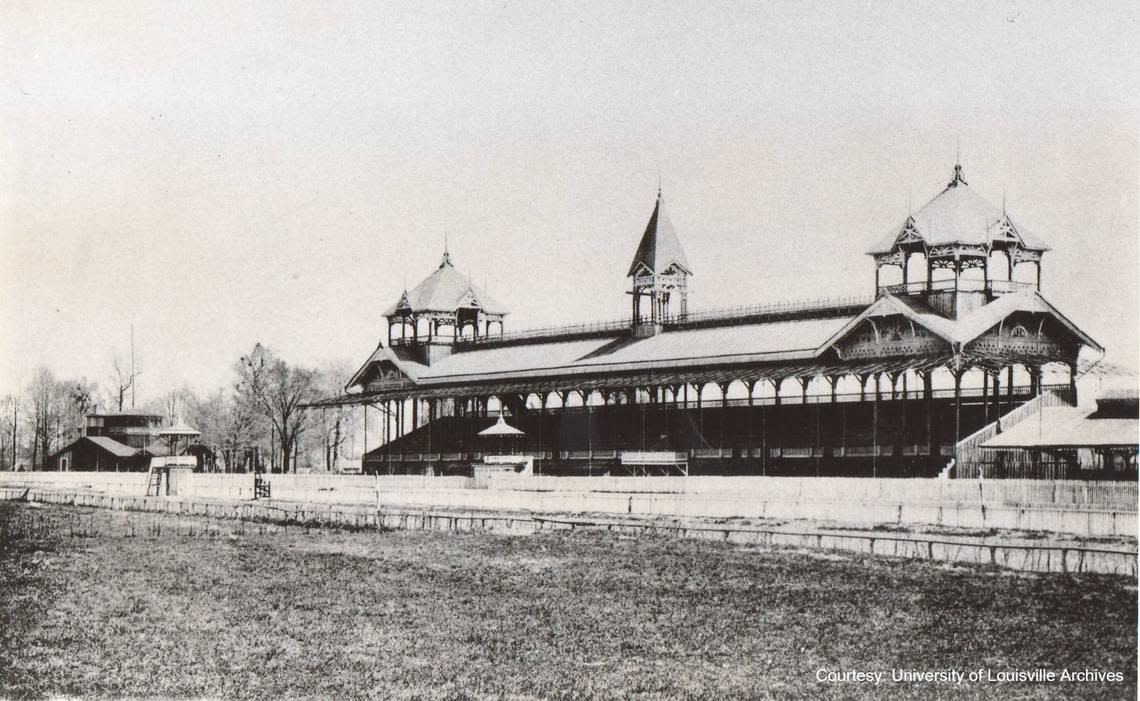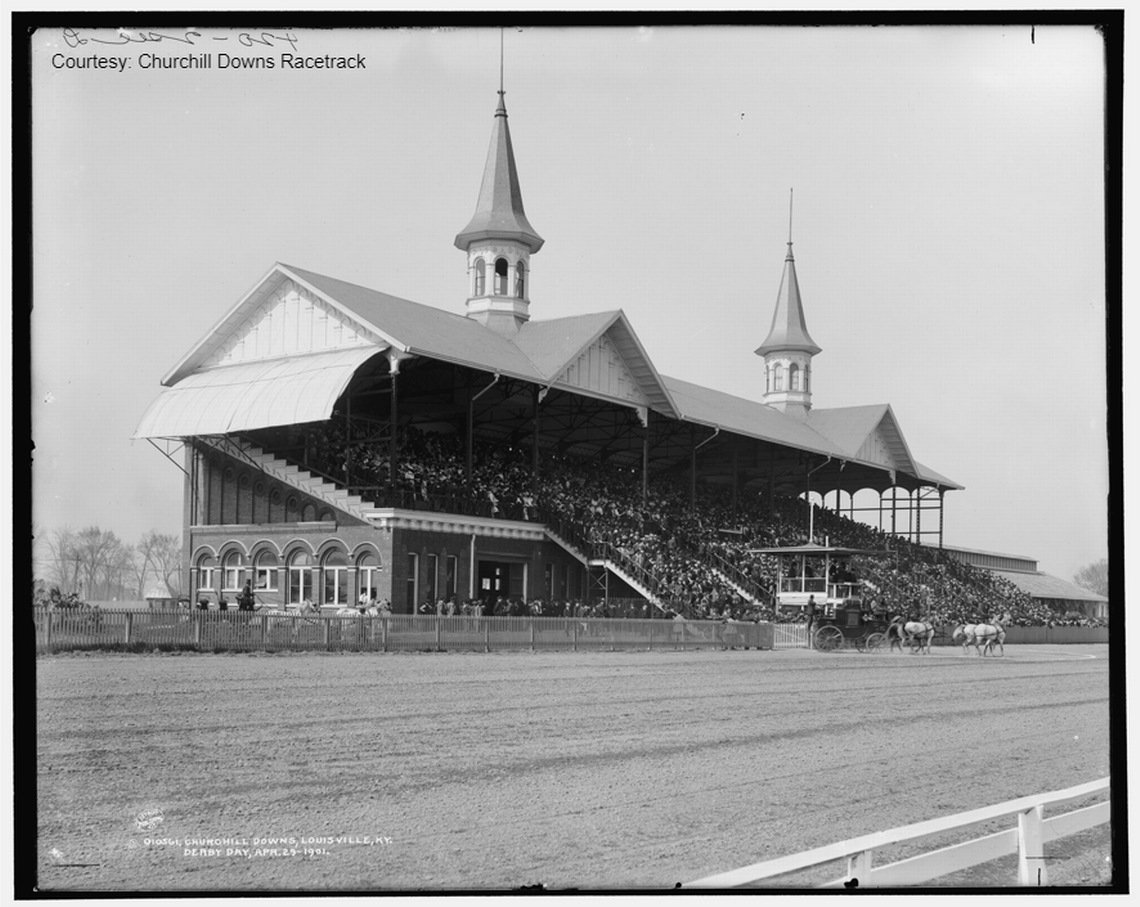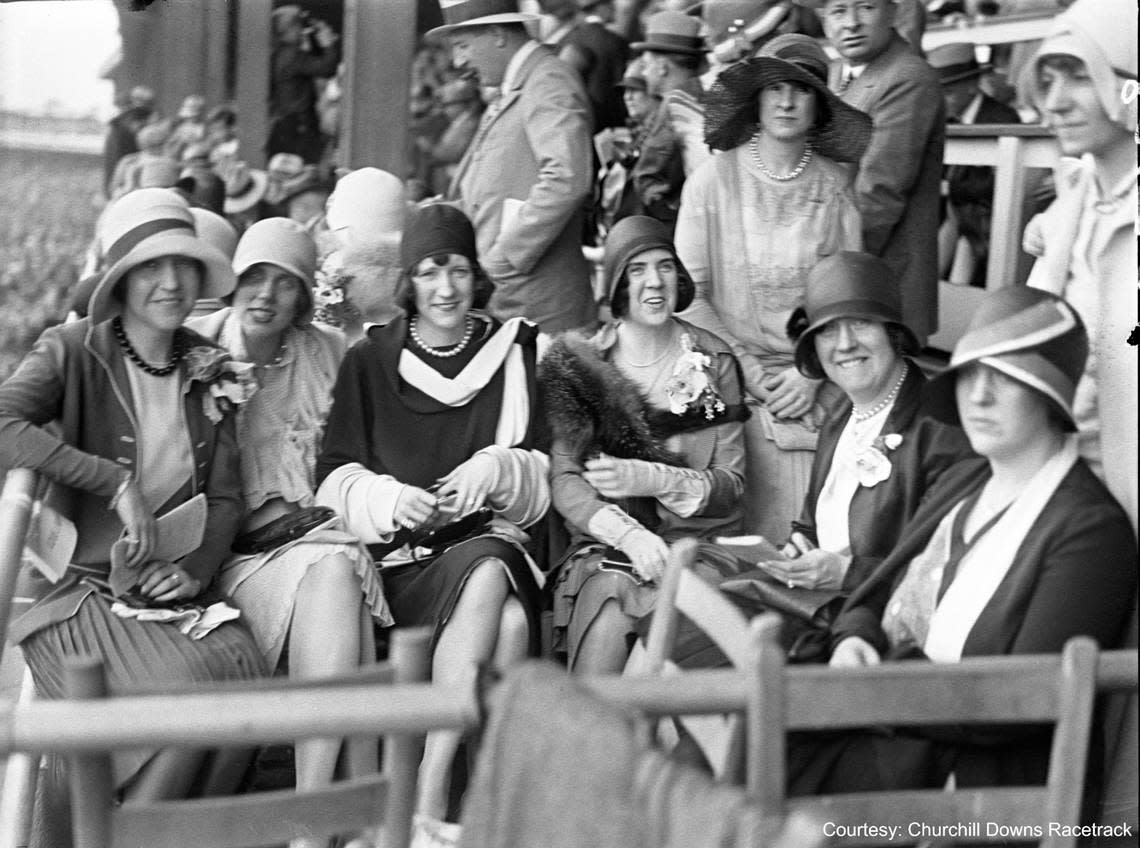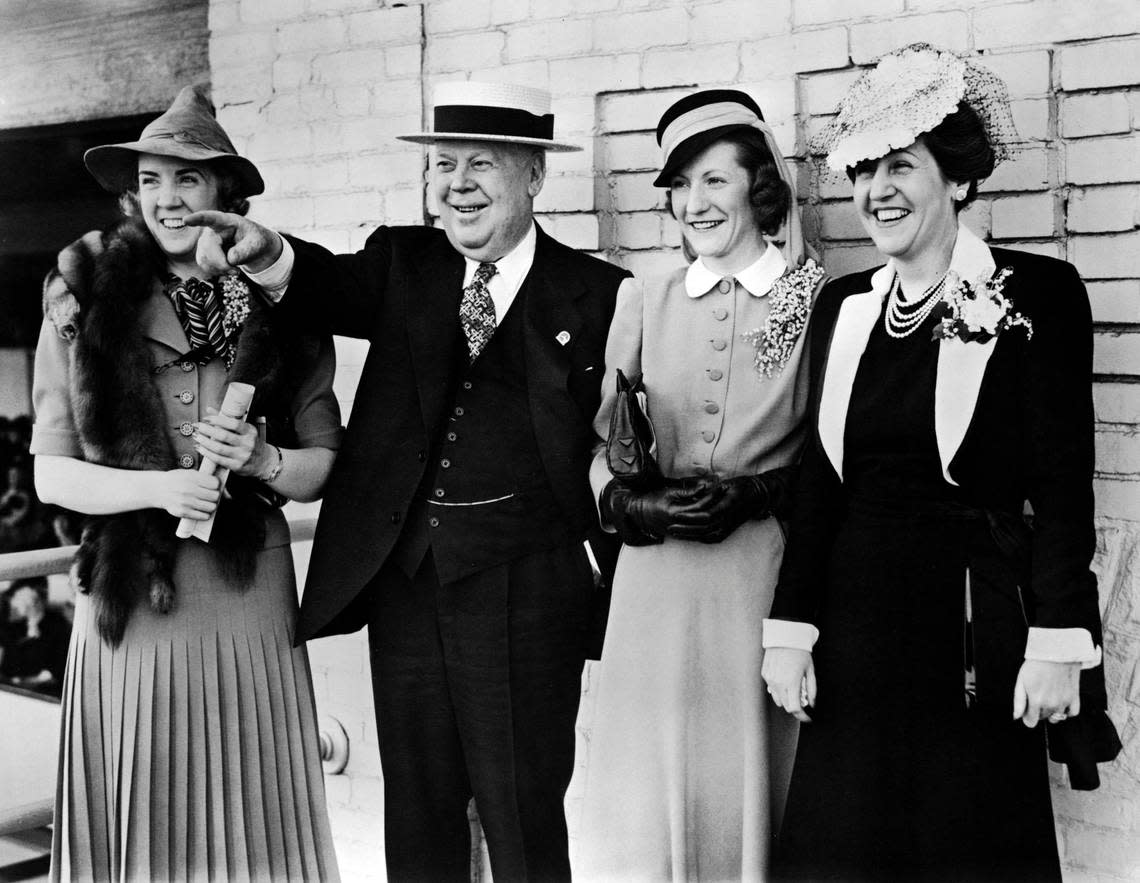What food did people eat at the first Kentucky Derby 150 years ago?
In our Uniquely Kentucky stories, Herald-Leader journalists bring you the quirky and cool, historic and infamous, beloved and unforgettable, and everything-in-between stories of what makes our commonwealth remarkable. Read more. Story idea? hlcityregion@herald-leader.com.
With the 150th running of the Kentucky Derby on May 4, Churchill Downs is gearing up for a horse racing spectacle like no other, including special foods that will be served in the many dining rooms in the stands.
This year’s menu includes My Old Kentucky Bibb Salad, Herbed Gournay Wiesenberger Grits, Bourbon Cherry Brisket Burnt Ends made with Woodford Reserve Bourbon, Old Forester Mint Juleps and 20,000 assorted desserts, according to the Louisville track.
Sign up for our LexGo Eat & Drink newsletters
The latest on food, dining and bourbon delivered right to your inbox for free. See what's happening in the world of bourbon, including buying, tasting tips and more on Tuesday. Stick around for the biggest restaurant news in Central Kentucky on Thursday. Sign up here.
But what about the first Kentucky Derby 150 years ago in 1875?
Turns out racing fans have been serving up fashion in the grandstand and food in the infield since the very beginning.
In 1875, menus at Louisville hotels offer a glimpse into what people ate, much of which today’s race goers wouldn’t recognize. But a familiar name in Churchill Downs history recalls that first Derby had smells that are iconic in Kentucky today.

What the first Kentucky Derby was like
But the first Kentucky Derby was quite a bit different from what racing fans experience today.
▪ It wasn’t the Run for the Roses ... it wasn’t called that for decades (the first recorded account on draping an American Beauty rose blanket on the winner is 1896 and the rose wasn’t the official flower until 1904.)
▪ It wasn’t run at Churchill Downs; the new track was called the Louisville Jockey Club and Driving Park.
▪ It wasn’t on the first Saturday in May; it was held on May 17, which was a Monday.
▪ It wasn’t run under the Twin Spires, which wouldn’t exist until 1895.
▪ The race was not the current distance of a mile and a quarter but a mile and a half.
▪ Betting was done through bookmakers, and ladies were discouraged from placing wagers at all.
▪ Although it was a festival event for Louisville, the race card was surprisingly short, with only four races.
▪ Louisville was booming, in the midst of expanding from a population of about 72,000 in 1860 to 124,000 in 1880. And even though the track was basically out in the country surrounded by farms, that did not prevent a reported 10,000 people from making their way there.
What did the crowds eat the first Kentucky Derby?
So what did those thirsty, hungry thousands imbibe as they watched Aristides and jockey Oliver Lewis win the race?
Turns out it’s hard to know.
Newspapers of the day seem to have been more interested in the beauty of the ladies in the stands than in what people ate.
Seriously, they went on a bit: “The portion of the Grand Stand devoted to the ladies was one grand bouquet of beauty, refinement and intelligence. The ladies in the various costumes looked like so many parti-colored butterflies, balancing themselves on their wings, in the slanting rays of the bright sun,” waxed the May 21, 1875, coverage in the “Live Stock Record.” “All the shades of beauty is fully represented, from the blond to the brunette, from the matron, whose hair is threaded with the silver, to the young girl just blushing into womanhood, whose cheeks are as ruby red as a peach that has been kissed by the sun.”
They didn’t describe the horses that fulsomely.

Louisville dining menus in the late 1800s
Hotels were popular venues for banquets and a surviving menu from one at Louisville Hotel in 1872 gives some idea what people could tuck into in the era, some of which would be hard to stomach today: Green sea turtle soup, scrambled hog’s brains with drawn butter, calf’s head a la Toulouse, broiled squirrels, fillets of bass in aspic and oysters on the half shell, in aspic, in soup, fried, steamed, scalloped and pickled.
The menu includes only four vegetables: Asparagus, sweet potatoes, stewed tomatoes and green peas.
There also are some mentions of refreshments in Derby histories, including mint juleps featuring Kentucky bourbon in the traditional silver cups.
“Fashionable ladies and gentlemen from all parts of America were seated in the grandstand, and the clubhouse veranda was dotted with parasols, rocking chairs, and black waiters in white coats carrying trays of frosted silver cups,” according to James Nicholson’s book, “The Kentucky Derby: How the Run for the Roses Became America’s Premier Sporting Event.”
While juleps apparently have been associated with the Derby since the start, the signature Derby julep glass didn’t arrive until 1939. The year before, the track noticed clubhouse patrons taking water glasses with the Churchill Downs logo on them as souvenirs and decided to sell official julep glasses. They’ve been offered in some form ever since and are highly sought by collectors.

There don’t appear to be records of what was served as concessions at the track in early days, but there are some references to menus for the clubhouse as well as dinners hosted by then-track owner Col. Merriweather Lewis Clark.
In 1891, Clark hosted a Derby season dinner at Louisville’s Pendennis Club with a menu (in French) that included beefstock broth, black coffee, tomatoes with mayonnaise, fish with fine herbs and cucumber, lamb and mint sauce, new potatoes, chicken au jus, asparagus, peaches and ice cream, blue cheese and champagne.
Side note: Clark and his bride had honeymooned in Europe in 1872 and he came back eager to launch races patterned on those he’d seen in England, including the Epsom Derby and Oaks, named for Lord Derby’s country estate. Which is why today we have the Kentucky Oaks for fillies and the Kentucky Derby.
What Matt J. Winn, future Churchill Downs owner, remembered about the first Derby

Chris Goodlett of the Kentucky Derby Museum said that future Churchill Downs president Matt J. Winn recounted in an interview with writer and Churchill Downs publicist Frank Menke in the 1940s his memories of the first Derby, which he saw from the infield on his father’s grocery hauling wagon.
“One of the memories he really talks about is the smell of the fried chicken wafting in the infield,” Goodlett said. Winn recalled people passing around fried chicken, fried fish and country ham in a festival atmosphere.
Most likely people brought in their own food, he said. “I can’t say with any certainty that they would have had a concession stand as we would know it in 1875.”
Picnics were undoubtedly popular, just as they are now, and many of the items we’d include today from ham on biscuits to Benedictine’s cucumber and cream cheese spread would have been perfect.
Winn also recalled that in his boyhood in Louisville his mother smoked ham, baked, sausage and had chickens for eggs, canned or picked fruits and vegetables. There was no city water yet or electricity so everyone cooked by coal or wood stoves.
Longtime Herald-Leader racing writer and now historian Maryjean Wall pointed out another possibility: Burgoo, a meaty stew that has been associated with racing meetings since the early 1800s and still is today, most famously at Keeneland. There was even a horse named for the dish: “Burgoo King was a Derby winner for E. R. Bradley,” in 1932, Wall said.
We have some idea of what they didn’t have:
They didn’t have Coca-Cola, which wouldn’t be invented until 1886. Or Cracker Jack, which was introduced in 1896 by the F. W. Rueckheim & Bro. candy and popcorn shop in Chicago.
It’s possible they had hot dogs but almost certainly not from a concessionaire. While the frankfurter has been around since 1487 and Germans always at them with bread, and a German baker opened the first Coney Island hot dog stand in 1871, they didn’t become standard fare at baseball games until 1893, according to hot dog researchers.
But fried chicken is almost as universal as the julep: Goodlett said that one surviving Derby festivities menu from a 1964 picnic with horse breeder Mrs. Cornelius Vanderbilt Whitney “lists cold chicken, biscuits stuffed with ham and individual pecan pies.”
Today’s Derby goers will consume from concession stands thousands of pounds of barbecue sandwiches, beef, chicken, pork loin, roasted shrimp, hot dogs and of course gallons of mint juleps, Goodlett said.






